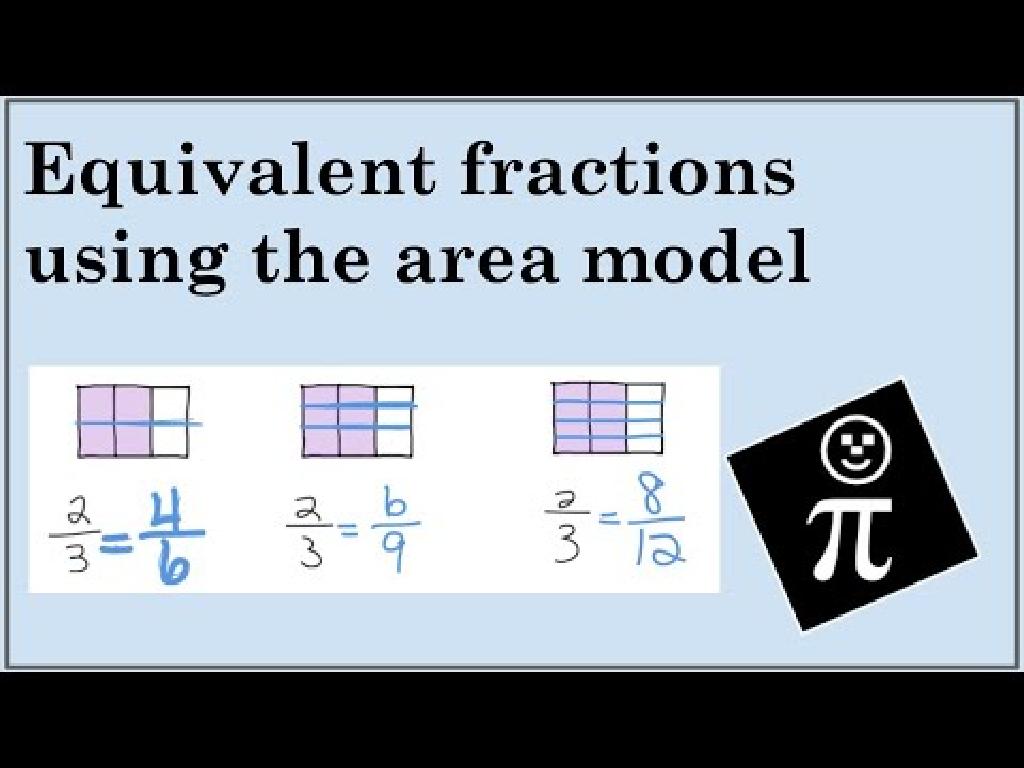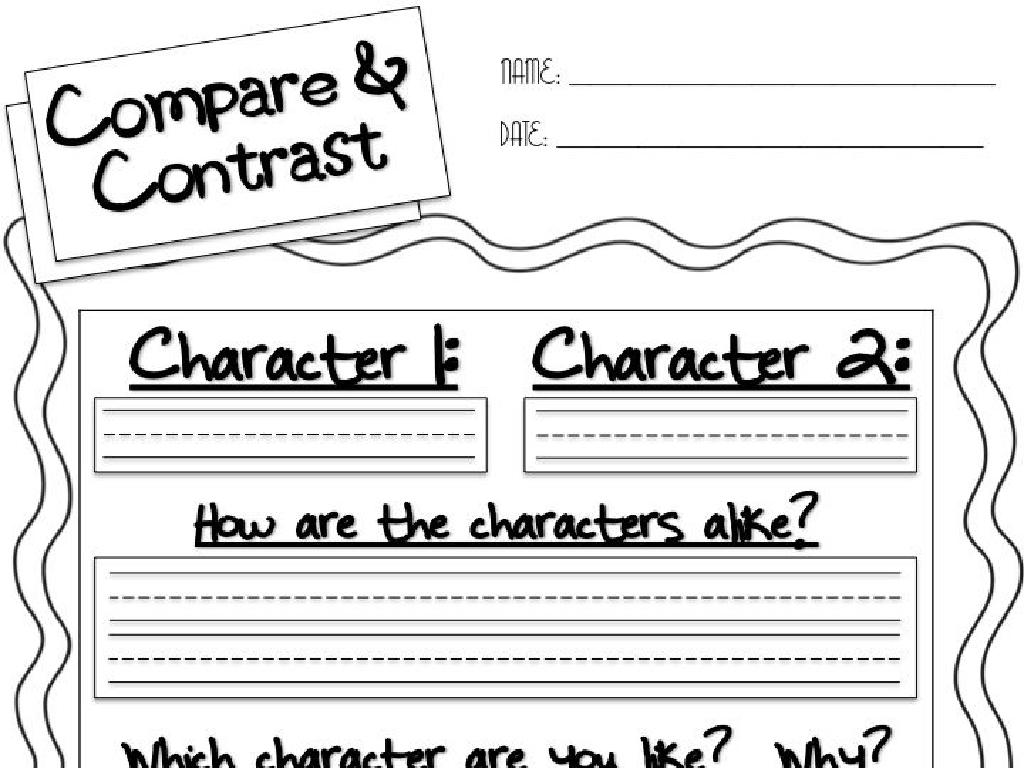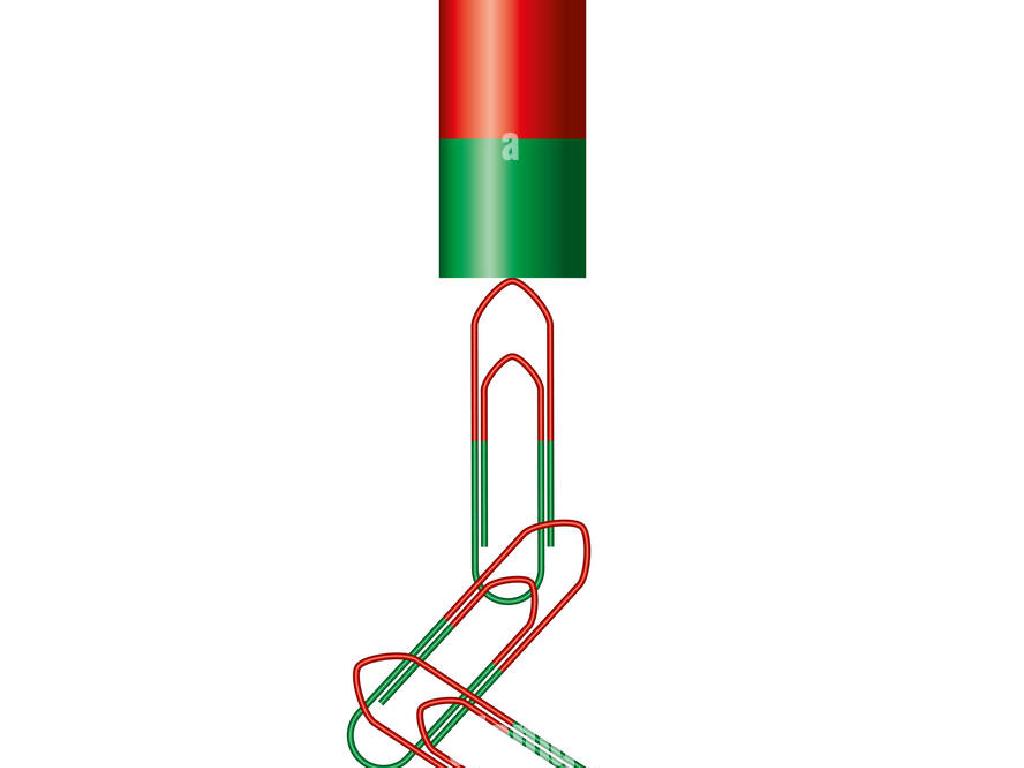Skip-Counting By Twos, Fives, And Tens
Subject: Math
Grade: Second grade
Topic: Skip-Counting And Number Patterns
Please LOG IN to download the presentation. Access is available to registered users only.
View More Content
Welcome to Skip-Counting!
– What is Skip-Counting?
– Jumping over numbers in a pattern, like hopping from one number to the next.
– Benefits of Skip-Counting
– Helps with math skills like addition, telling time, and counting money.
– Counting by 2s, 5s, and 10s
– We’ll learn to count in twos (2, 4, 6…), fives (5, 10, 15…), and tens (10, 20, 30…).
– Practice makes perfect
|
This slide introduces the concept of skip-counting, a fundamental skill in early mathematics that helps students count more efficiently. Explain that skip-counting is like hopping over numbers in a sequence, using a consistent pattern. Emphasize its usefulness in everyday math tasks such as adding numbers quickly, understanding time on a clock, and counting money. Focus on counting by 2s, 5s, and 10s, as these are the basic patterns they’ll encounter and use frequently. Encourage students to practice skip-counting aloud and with physical movements to reinforce learning. Provide various examples and engage the class in interactive activities where they can practice skip-counting by these increments.
Counting by Twos
– Counting by 2s
– We add 2 each time, like 2, 4, 6, 8…
– Pairs help us count
– Shoes, socks, gloves all come in pairs
– Practice with pairs
– Let’s count: 2 gloves, 4 gloves, 6 gloves…
– What number is next?
– After 2, 4, 6, 8… comes 10!
|
This slide introduces students to the concept of skip-counting by twos using relatable items like pairs of shoes, socks, and gloves. Start by explaining that skip-counting is a way to count faster by adding the same number each time. Use visuals of pairs of items to help students understand the concept of counting by twos. Engage the class in a practice session by counting aloud together and using physical objects if possible. Encourage students to think ahead and predict the next number in the sequence. The goal is for students to recognize patterns and feel confident in skip-counting by twos.
Counting by Fives
– Let’s skip-count by 5s!
– Imagine the fingers on your hand
– Each finger represents 5, just like counting 5, 10, 15, 20 for 4 fingers
– Practice sequence: 5, 10, 15, 20…
– This is how we count by fives: start at 5 and add 5 more each time
– Can you keep going?
– Try to reach 50 by adding 5 each step!
|
This slide is designed to teach second graders the concept of skip-counting by fives. Start by relating the concept to something familiar, like the five fingers on a hand, to make it more intuitive. Then, guide them through the practice sequence, encouraging them to continue the pattern beyond what’s shown. The goal is to help them understand the pattern of adding 5 to the previous number. In the next class, ask students to demonstrate their understanding by continuing the sequence and possibly starting from different numbers, like 25 or 35. This activity will reinforce their counting skills and prepare them for more complex math concepts.
Counting by Tens
– Counting by 10s is exciting!
– Visualize groups of ten
– Think of a pack of crayons, each group has 10
– Practice counting: 10, 20, 30, 40…
– Let’s count together: 10, 20, 30, 40, what comes after?
– Guess the next number in sequence
– Can you figure out what number comes next?
|
This slide is designed to teach second graders the concept of skip-counting by tens in a fun and engaging way. Start by expressing the joy and excitement of counting by tens. Encourage the students to visualize groups of ten in items they are familiar with, like a pack of crayons, to make the concept more relatable. Engage them in a practice session by counting aloud as a class from 10 to 40 and then prompt them to guess the next numbers in the sequence. This activity helps solidify their understanding of number patterns and prepares them for more advanced math concepts. Make sure to praise their efforts and correct any mistakes with positive reinforcement.
Patterns in Skip-Counting
– Recognizing patterns with numbers
– Patterns help us predict the next numbers
– Numbers align in rows on a chart
– Like a game, see how numbers form lines
– Explore 2s, 5s, and 10s patterns
– 2s: 2, 4, 6, 8… 5s: 5, 10, 15, 20… 10s: 10, 20, 30, 40…
– Practice finding these patterns
|
This slide introduces students to the concept of skip-counting and how it forms patterns that are easy to recognize and predict. Start by asking students if they can see any patterns on the chart and guide them to notice the alignment of numbers in rows. Focus on the patterns created when skip-counting by 2s, 5s, and 10s, and use a number chart to visually demonstrate this. Encourage students to participate by asking them to predict the next number in a sequence. For homework, they can create their own number chart and highlight the skip-counting patterns for 2s, 5s, and 10s. This will reinforce their understanding and help them see the practical application of patterns in mathematics.
Skip-Counting in Real Life
– Understanding skip-counting
– It’s like hopping over numbers!
– Uses: Time and money
– Tell time, count coins, or tally scores
– Example: Minutes in hours
– 60 minutes in 1 hour, so 2 hours have?
– Practice with real objects
– Use clocks and coins to learn
|
This slide aims to show students how skip-counting is used in everyday life, such as telling time and counting money. Start by explaining that skip-counting is a way to count faster by ‘hopping’ over numbers. For instance, when we count by fives, we go 5, 10, 15, and so on. Relate this to real-life scenarios like telling time, where we skip-count by fives to read minutes on a clock, or when dealing with money, where we count by tens or fives based on the coins’ values. Use the example of calculating minutes in two hours to illustrate skip-counting by sixties. Encourage students to bring in real-life objects like clocks and coins for hands-on practice. This will help them understand the concept better and see the practical application of math in their daily lives.
Let’s Practice Skip-Counting Together!
– Fill in missing numbers on the worksheet
– Use the worksheet to practice skip-counting
– Pair up and assist each other
– Two heads are better than one! Work together to find the pattern
– Count by twos, fives, and tens
– Practice makes perfect! Start with 2, 4, 6… then 5, 10, 15… and 10, 20, 30…
|
This slide is for a class activity focused on reinforcing the concept of skip-counting. Provide each student with a worksheet that has sequences with missing numbers. Students should work in pairs to fill in the blanks, encouraging collaboration and peer learning. Emphasize the patterns of adding 2, 5, and 10 to the previous number to find the next one in the sequence. As a teacher, walk around the classroom to offer guidance and ensure that students are correctly applying the skip-counting method. Possible variations of the activity could include using a number line, singing a skip-counting song, or creating a game where students race to complete the sequences.
Class Activity: Skip-Counting Hopscotch
– Play hopscotch to learn skip-counting
– Jump by twos on the hopscotch grid
– Start at 2 and hop to 20, counting by twos
– Jump by fives for a bigger challenge
– Start at 5 and hop to 50, counting by fives
– Try jumping by tens to reach the end fast
– Start at 10 and hop to 100, counting by tens
|
This activity is designed to help students practice skip-counting in a physical and engaging way. Set up a hopscotch grid with numbers for students to jump on. They should start with twos, then progress to fives, and finally tens. This will reinforce their understanding of number patterns and the concept of skip-counting. Have students work in small groups and encourage them to help each other. Possible variations include having students call out the numbers as they jump, or using a dice to determine the number of spaces to skip-count. Ensure safety and participation for all students.
Celebrating Skip-Counting Success!
– Congratulations on skip-counting!
– Understanding the importance
– It helps with math like addition, telling time, and counting money.
– Practice makes perfect
– Try counting items in twos, fives, or tens with family members.
– Share your skills at home
– Count toys, snacks, or steps with your family to show what you’ve learned!
|
Today’s class focused on skip-counting by twos, fives, and tens, which is a fundamental skill in mathematics that aids in the development of addition, multiplication, and understanding of number patterns. As we conclude, it’s important to reinforce the value of skip-counting and encourage students to continue practicing at home. Engaging with family members in counting everyday items can provide a fun and interactive way to reinforce these concepts. For the next class, consider asking students to share their at-home counting experiences, which can help build their confidence and demonstrate real-world applications of skip-counting.






